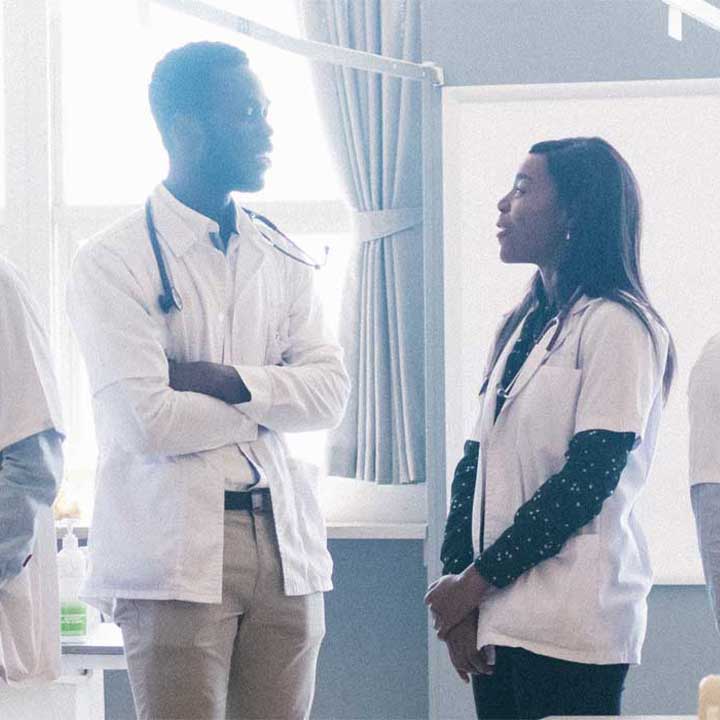
Education
The pink and blue are terminal processes from two neighboring astrocytes. A presynaptic bouton and the vesicles inside are white, and a postsynaptic spine is brown. Progress in Neurobiology 213 (2022) 102264.
Photo by: Min Zhou, PhD
The Department of Neuroscience encompasses a broad range of neuroscience research spanning cellular, organismal and behavioral approaches. By focusing on understanding the nervous system in health and disease, the department contributes to both a fundamental understanding of neuroscience and novel avenues for therapies.
We’re a top-ranked center for fundamental, translational and clinical research conducted by faculty, fellows and students. Unique research opportunities include a Neuroscience Center Core Program — made possible by a grant from the National Institute for Neurological Disorders and Stroke. This supports core facilities and services in areas such as mouse and zebrafish genetics, nerve injury, rodent behavior, neurophysiology, muscle physiology, xenografting and small animal imaging.
Department resources include access to more than 25 state-of-the-art medical center research facilities and services. These involve proteomics, microarray, nucleic acid, comparative pathology and mouse phenotyping, analytical cytometry and biostatistics.
Support for clinical and translational research is provided by the Center for Clinical and Translational Science Institute (CTSI), funded by a National Institutes of Health (NIH) Clinical Translational Science Award.

Welcome to The Ohio State University’s Department of Neuroscience. Our research leads us to novel discoveries that are shaping fundamental knowledge about how the nervous system develops and functions. We are dedicated to excellence — always and in all ways.
Phillip Popovich, PhD
Professor and Chair, Department of Neuroscience
Director of the Center for Brain and Spinal Cord Repair
Faculty Affiliate, Chronic Brain Injury

Teaching, research and the development of our faculty are important to the mission of the Department of Neuroscience.
Learn more
Click ‘Learn more’ for upcoming speakers scheduled for this academic year.